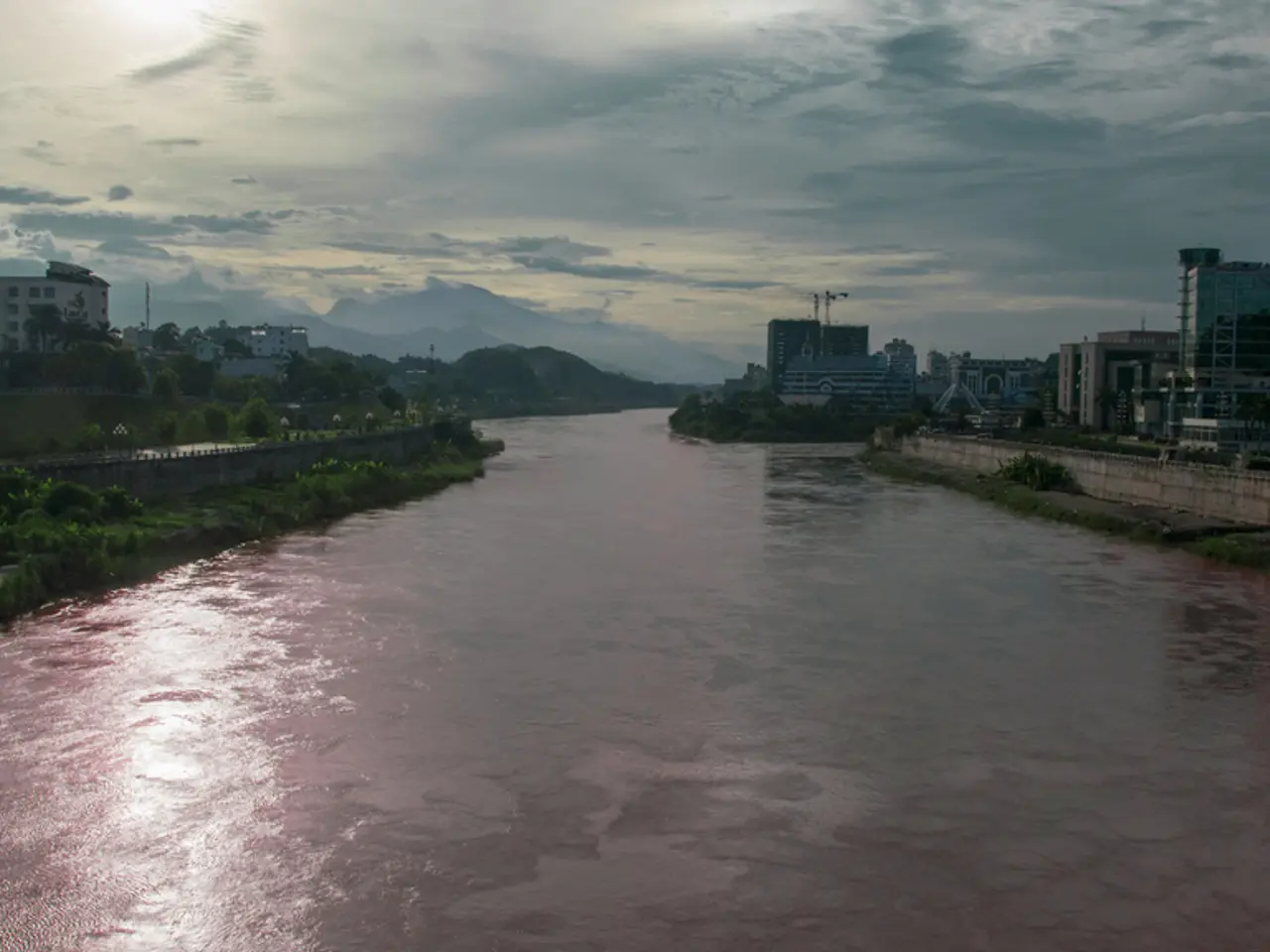"Climate catastrophe poses a threat to structures and public facilities"
In the heart of the Mediterranean region, Valencia, Spain, is grappling with the challenges posed by increasingly frequent and intense extreme weather events. To address this, current approaches and recommendations for flood protection in densely populated urban areas emphasize a combination of technical infrastructure upgrades and nature-based solutions.
The modernization and climate-proofing of critical infrastructure is a key element. Following the devastating 2024 floods, investments led by entities like Iberdrola and supported by the European Investment Bank (EIB) focus on rebuilding and upgrading power distribution networks. Measures include undergrounding overhead power lines, installing smart transformers, expanding automation, and enhancing grid resilience to extreme weather. These improvements benefit over 650,000 clients and improve supply security.
Advanced tools such as the Argos platform, developed in Catalonia and applicable to similar regions, integrate real-time meteorological data, emergency inputs, and sensor information to enable early warnings and support emergency management during extreme weather events.
Nature-based solutions and green infrastructure also play a crucial role. Using natural barriers like vegetated riverbanks ("nature walls") and planting endemic species help absorb runoff, filter water, and reduce flood impacts. Such approaches shift urban flood management from reactive to proactive strategies by enhancing natural water retention and resilience within the urban environment.
Authorities in eastern Spain issue warnings and advise caution during storm events, including avoiding parking in flood-prone zones like dry riverbeds and ravines, driving at moderate speeds, and not crossing flooded areas. These behavioral recommendations complement physical infrastructure adaptations.
Valencia leverages dense networks of personal weather stations that enable fine-scale spatial and temporal rainfall monitoring, better informing flood response and infrastructure planning.
These integrated approaches reflect a broader trend in urban flood risk management that combines technical infrastructure resilience, digital real-time monitoring and early warning, and nature-based interventions, tailored to the intensified flood risks driven by climate change. Valencia's ongoing flood mitigation efforts embody this multidimensional strategy, suited for highly urbanized, flood-prone Mediterranean environments.
However, challenges remain. Many zoning plans in Spain are still from the 1980s, posing a structural risk. There is no law in Spain that requires municipalities to adapt their zoning plans to the new climatic realities every 15 years. The implementation of necessary adaptations is politically difficult, and different levels of government often work against each other, particularly in topics like disaster protection.
Jorge Olcina Cantos, a geography professor at the University of Alicante, specializing in climate development, water management, and risk adaptation, emphasizes the key to flood protection is a smart combination of technical infrastructure and nature-based solutions, with the goal of protecting human lives.
In some cases, resettlements may be considered in the long term for buildings in high-risk areas with life danger. The "Vega Renhace" plan, developed to address flood risks, was halted due to a change of government. Since many riverbeds in the Mediterranean region often do not carry water for months, building directly in or very close to riverbeds has occurred out of ignorance and later out of greed for profit.
As Valencia continues to adapt to the challenges of climate change, the focus should be on minimizing damage and adapting to the new realities, rather than debating the existence of climate change itself. With more room for science and experts, particularly in risk management, and a commitment to effective collaboration between different levels of government, Valencia is well-positioned to navigate the future with resilience and determination.
- The long-term plan for buildings in high-risk areas could potentially involve resettlement, as suggested by the "Vega Renhace" plan, which aims to mitigate flood risks while prioritizing human safety.
- In the realm of science, health-and-wellness, and environmental-science, Valencia aspire to coordinate effectively with various levels of government to implement adaptive measures, focusing on minimizing damage and adapting to the new realities driven by climate change, while preserving the urban environment with nature-based solutions.




